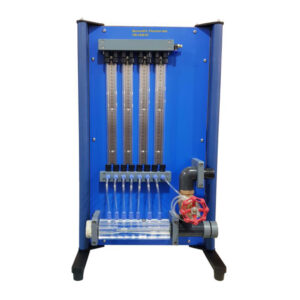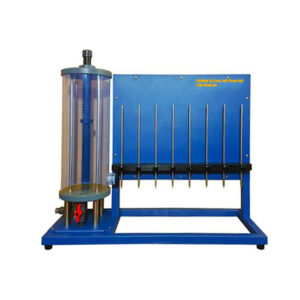Heat conduction and convection are among the three basic forms of heat transfer and often occur together. TH-3303 allows basic experiments on both forms of heat transfer: heat conduction and convection. At the heart of the unit are different metal samples. The samples are placed on a heater and are heated on one side. The heat is conducted through the sample and dissipated to the environment. The sample used behaves like a cooling fin. In addition there are fans below the sample. The flow rate of the fans is continuously adjustable in order to influence the convective heat transfer. The air flow is conveyed evenly around the sample. Consequently, besides conducting the experiment with still air (free convection), it is also possible to conduct experiments with flowing air (forced convection). The effect of different materials on heat conduction is demonstrated by comparing different samples. The experimental unit is equipped with five temperature sensors. Heating power and flow velocity of the air flow are adjusted and displayed via the software. The microprocessor-based instrumentation is well protected in the housing.
Experiments
- Effect of heat conduction and convection on heat transfer
- Effect of free and forced convection on heat transfer
- Calculate convective heat transfers
- Effect of different materials on heat conduction
- Effect of sample length on heat transfer
Specification
- Investigate heat conduction and convection using the example of a cooling fin
- Cooling fin: sample heated at one end, made of metal
- 6 samples made of different materials and with different lengths
- 6 fans for experiments with forced convection
- Continuously adjustable heating power and fan power
- Display of temperatures, heating power and air velocity in the software
- Due to integrated microprocessor-based instrumentation no additional devices with error-prone wiring are required




